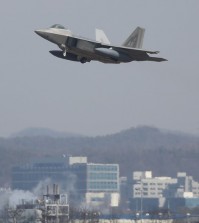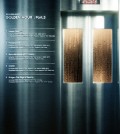- California Assembly OKs highest minimum wage in nation
- S. Korea unveils first graphic cigarette warnings
- US joins with South Korea, Japan in bid to deter North Korea
- LPGA golfer Chun In-gee finally back in action
- S. Korea won’t be top seed in final World Cup qualification round
- US men’s soccer misses 2nd straight Olympics
- US back on track in qualifying with 4-0 win over Guatemala
- High-intensity workout injuries spawn cottage industry
- CDC expands range of Zika mosquitoes into parts of Northeast
- Who knew? ‘The Walking Dead’ is helping families connect
Jang Bogo Station opens in Antarctica

With the Jang Bogo Station in Terra Nova Bay, South Pole, Korea became the 10th country in the world to run more than year-round research center in the Antarctic. (Yonhap)
By Yi Whan-woo
Korea opened its second Antarctic research station, Wednesday, making it the 10th country to run more than one year-round station on the southernmost tip of the planet.
The Ministry of Oceans and Fisheries said that it has completed construction of the Jang Bogo Station in Terra Nova Bay on the eastern part of the frozen continent, and the station will begin operations from early March.
The new base was built 25 years after the country set up its first research center, the King Sejong Station, on King George Island in 1988. The two stations are 4,500 kilometers away from each other, and are run by the Korea Polar Research Institute (KOPRI) under the ministry.
The two research bases are expected to boost the country’s efforts to enhance its knowledge of Antarctic sciences and contribute to international collaboration on related academic disciplines, according to KOPRI.
The Jang Bogo Station, named after an admiral who controlled the southwestern coast of the Korean peninsula during the Shilla dynasty (57 BC-935 AD), was built on 4,458 square meters of land with international approval.
It comprises 16 buildings, including residences, laboratories and 24 observatory facilities, according to the ministry. It added the new research base can accommodate up to 60 people.
The station was constructed by the country’s No. 1 builder, Hyundai Engineering & Construction (E&C), starting in December 2012. It is designed to endure temperatures dropping to 40 degrees Celsius below zero, and to withstand winds speeds of up to 65 meters per second, the company said.
President Park Geun-hye said she expects the new station to support the country in widening its scientific exploration of the South Pole.
“The Antarctic is a gigantic lab for the natural sciences and also a continent of opportunity where abundant energy resources are preserved,” Park said in a video message at Wednesday’s ceremony to celebrate the completion of construction.
“With an adventurous mind and the spirit of challenge, I look forward to seeing researchers at the new station open a new horizon on Korea’s scientific expedition on the continent.”
Some 300 delegates attended the ceremony. They included National Assembly speaker Kang Chang-hee; Deputy Minister for Marine Policy Office Moon Hae-nam; and KOPRI President Kim Yea-dong. Others were Kelly Falkner of the U.S., Peter Beggs of New Zealand and Franco Ricci of Italy, who serve as the heads of their respective countries’ Antarctic research units. The U.S. runs three permanent research centers at the South Pole, while New Zealand has one. Italy runs a station only during the summer.
“The new research center will boost Korea’s academic reputation in Antarctic sciences together with the King Sejong Station,” Kang said. He stopped there during a 15-day visit to the Oceania countries and near-by regions that will run through Feb. 22.
“I sincerely appreciate this great achievement made by the ministry and KORPI,” he added.
The ministry said 11 of 15 researchers to be stationed at the new base were selected from the King Sejong Station to share their knowhow about what is needed for survival at the South Pole.
The new station will be used for geographical research purposes, including the collection of data on glaciers, meteorites and the ozone layer, the ministry said. It also said the new base will serve as a test center for new plants, equipment, robots and materials that are developed by industrial and academic research centers in Korea for use in extreme conditions.

















benjamin chitty
October 9, 2014 at 10:49 AM
안녕하세요, 우리는 수학 프로젝트를 수행하고 우리는 장을보고 메터 연구 시설에 대한 정확한 길이와 폭과 높이를 알아야합니다, 감사합니다, 벤자민 CHITTY 7 등급
Pingback: Building a Space Weather Radar in Antarctica » Blog Archive » The Araon
Pingback: Time for Coral Sampling… | oceanaggie